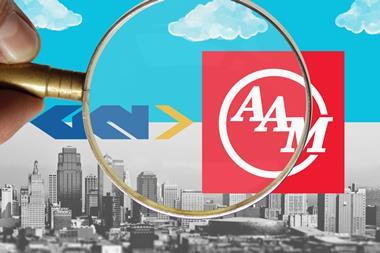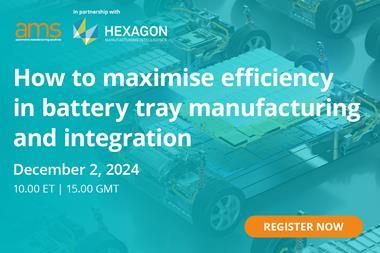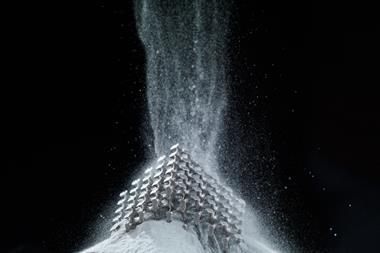
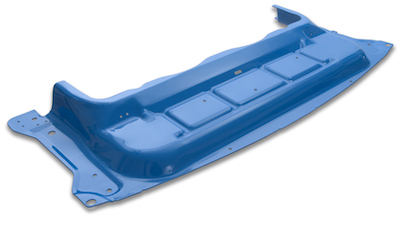 New, innovative advanced high-strength steel grades are being developed to help the automotive industry create vehicle structures for the electric age
New, innovative advanced high-strength steel grades are being developed to help the automotive industry create vehicle structures for the electric age
One common contention in the rapid growth of the electric vehicle is the range they can be driven between recharges. Whereas one important question, of course, is how to make energy-denser batteries, OEMs are looking to boost the driving range of electric vehicles also by making the vehicle’s structure lighter. A cost-efficient solution addressing the dilemma comes in the shape of cold-formed advanced high strength steels (AHSS).
Keeping component weight and costs to a minimum is a main focus as electric cars become increasingly more popular. The role of steel grades such as Docol – SSAB’s cold-formable AHSS – has become more important than ever in driving innovation towards a more sustainable future.
Side impact beams, bumpers, pillars and seats are some of the traditional automotive components made using SSAB’s Docol steel. However, Docol steel has much greater potential, especially in electric cars, where new components, such as battery protectors, come into play.
Electric car batteries are expensive and need to be protected from road debris or leaking hazardous material in the event of a collision. Battery protectors made from Docol AHSS can help to ensure the strongest protection with the lowest possible weight – and cost-effectively.
In 2010, the average CO2 emission per vehicle was 140 g/per km in the EU. New EU targets for 2025 aim to halve average vehicle emissions compared to 2010. Electronic vehicles will be one of the major driving forces behind achieving this target.
Since car weight affects vehicle rolling resistance, the use of strong, lightweight steel solutions will be very important. As stronger, cold-formable AHSS grades become available to OEMs, it will be possible to reduce the weight of complex components without the costly and energy consuming process of hot forming.
By increasing the share of advanced high-strength steels in components, car manufacturers can lower vehicle weight and increase the percentage of recyclable parts.
Docol’s high strength-to-weight ratio means that thinner steel can be used without sacrificing strength, so you can significantly cut weight, boost fuel efficiency, improve driving performance and cut your costs.
The demand of AHSS with good formability properties is increasing because of the need to build lighter vehicles to reduce CO2 emissions and improve crash properties. Cold forming of AHSS is a cost efficient alternative to produce lightweight structural parts for the automotive industry. However, designers and manufacturers are struggling with limitations of AHSS when it comes to edge ductility, bendability and spring back.
SSAB has long experience on innovative forming methods that works for new developed Docol steel grades with tensile strength up to 1700MPa.
Using proper forming methods will allow for:• Increased edge ductility on martensitic and complex phase steels• Reduced bending radii on AHSS• Springback elimination on a hat profile
The forming methods are easy to implement and give designers new possibilities to create parts in high strength steels with complex shapes. We experience all the time how we together with our customer can achieve great improvements on performance in the manufacturing process but it provides that we can be involved at an early stage of a project.
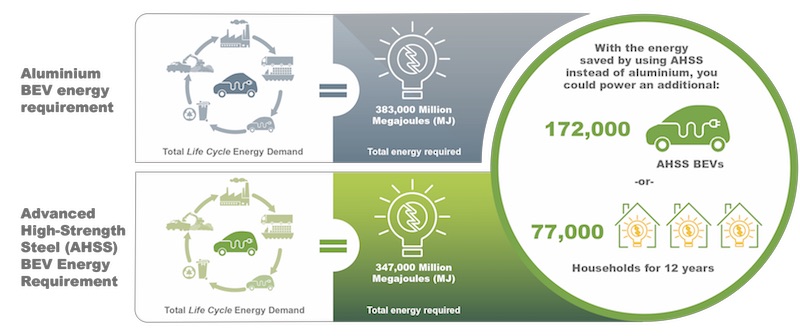 Vehicle structural materials affect battery electric vehicles (BEVs) efficiency in terms of their total life cycle emissions. A study conducted by World Auto Steel compared two BEVs, one made of aluminium and one using AHSS, using the University of California Santa Barbara Automotive Energy & Greenhouse Gas (GHG) Model (UCSB Model), to determine the material choice impact on each vehicle’s total life cycle energy usage, from manufacture, to powering the vehicle during use, to recycling it at the end of its useful life.
Vehicle structural materials affect battery electric vehicles (BEVs) efficiency in terms of their total life cycle emissions. A study conducted by World Auto Steel compared two BEVs, one made of aluminium and one using AHSS, using the University of California Santa Barbara Automotive Energy & Greenhouse Gas (GHG) Model (UCSB Model), to determine the material choice impact on each vehicle’s total life cycle energy usage, from manufacture, to powering the vehicle during use, to recycling it at the end of its useful life.
Considering a fleet of 1,000,000 BEVs of equivalent range, whose body structures are made 100% aluminium or 100% AHSS, the UCSB Model can calculate the energy required over the total vehicle’s life, from manufacture to recycling. The infographic below sets out the results, using global data (with the exception of China for a more conservative assumption) for energy usage in producing the primary material.www.ssab.com
Docol 1500MA martensitic steel for automotive applications, Docol 1500M allows for increased crashworthiness, lightweight design and cost-efficient production methods for the automotive industry. Docol 1500M is one of the strongest cold-rolled advanced high-strength steels on the market and has become the material of choice for automotive applications such as side impact beams, bumpers and structural components.






























